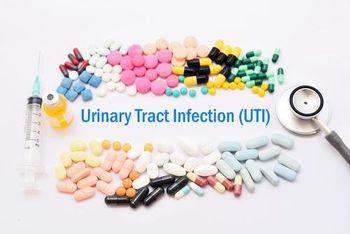
NSAIDS, Influenza Hospitalization, and Adverse Outcomes
Is there an association with adverse outcomes in patients hospitalized with influenza taking NSAIDS?
The
Often, nonsteroidal anti-inflammatory drugs (NSAIDs) are used when people are ill with flu or cold-like symptoms. More recently, there has been concern though, that NSAIDs like ibuprofen, taken to help reduce symptoms of such infections, could increase the risk of heart attacks or lead to adverse outcomes. This concern became especially prominent with reports that those patients taking NSAIDs without comorbidities, experienced more severe illness when infected with SARS-CoV-2.
To better understand the impact of NSAIDs and adverse outcomes in those patients with severe influenza, a
Outcomes were focused on admission to an intensive care unit (ICU) within thirty days of the hospital admission and death within thirty days of admission. In the cohort of patients with bacterial pneumonia, the researchers also evaluated pleuropulmonary complications. The median age of patients was 71 years and 51.4% were men. A majority (86%) had a positive influenza test within three days of admission (on either side). Evaluating death within thirty days, they found risk was 7.7%, or 600 individuals, which was lower than the risk for admission to an intensive care unit (13.7%).
“In total, 520 patients (6.7%) were currently using NSAIDs at the time of hospital admission," the authors noted. "These individuals were younger than individuals who did not use NSAIDs (median (IQR) age, 66 [54-74] years vs 71 [60-80] years) and a higher proportion used nonbenzodiazepine benzodiazepine receptor agonists (80 [15.4%] vs 717 [9.9%]) and had received antibiotics before admission (159 [30.6%] vs 1680 [23.2%]).”
In comparison to those who did not use NSAIDs, they found that there was less prevalence of cardiovascular disease in those using NSAIDS. Of those unmatched cohorts of patients admitted to the ICU with influenza or influenza-related pneumoniae, 20% used NSAIDS, while 13.3% did not. Moreover, 7.1% who used NSAIDs died within thirty days, whereas 7.8% of those who did not use NSAIDs died within thirty days of admission. For those patients using NSAIDs for a longer period of time, the authors found more of an association related to ICU admission.
Ultimately, this points to a lack of association with those patients using NSAIDS hospitalized for influenza and care within an ICU or death within thirty days. There is still much work to be done to assess the implications of NSAID use, especially long-term, in patients requiring hospitalization for respiratory viruses. As the authors note, those patients requiring hospitalization in an ICU did have an association with long-term NSAID use.
Newsletter
Stay ahead of emerging infectious disease threats with expert insights and breaking research. Subscribe now to get updates delivered straight to your inbox.









































































































































































































































































































